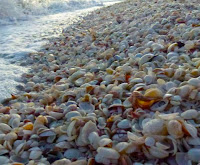Increasing voyages of exploration and commerce meant that precise navigation became essential. The method used by Christopher Columbus - Dead Reckoning- just wasn't good enough nor was Celestial Navigation and Sight Reduction Navigation using stars, the moon and sun to work out your position in latitude. In order to navigate accurately you needed to know where you were in both latitude (North to South) and longitude( East to West). Latitude was relatively easy to determine, if you knew the coordinates of a celestial object, the position of the object in the sky, the local sidereal time, apply some spherical trigonometry then you can determine your latitude.
 |
| A Sextant Used to measure the angle between any two visible objects. Its primary use is to determine the angle between a celestial object and the horizon which is known as the object's altitude. |
Stepping on the the podium in first place was Lincolnshire carpenter and self-taught clockmaker John Harrison (read here about his struggle with the Board of Longitude to actually be awarded the full prize money, it took the intervention of the King and another act of parliament).
 |
| John Harrison's Marine timekeeper, H4 completed in 1759 with its very stable, high frequency balance, it proved the successful design. It was based on the design of a watch rather than a clock. |
His chronometers worked at sea! Captain James Cook took K1 a replica of H4 with him on his sea faring expeditions.
Visit the museum in Greenwich to see John Harrison's chronometers, if you want to see one of his early Clocks or his paper drawing of the movement of H.4, go to the Clock Makers Museum at the Guildhall, City of London, where there is a wonderful collection of early clock, watches and sundials. Entrance is free!


















